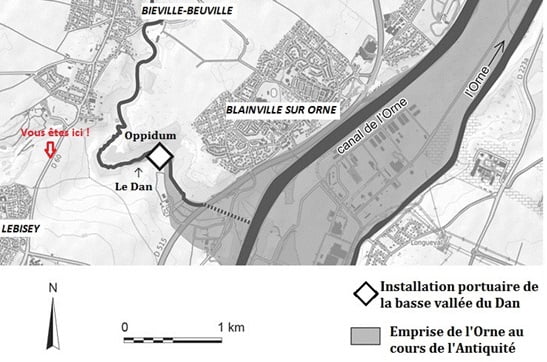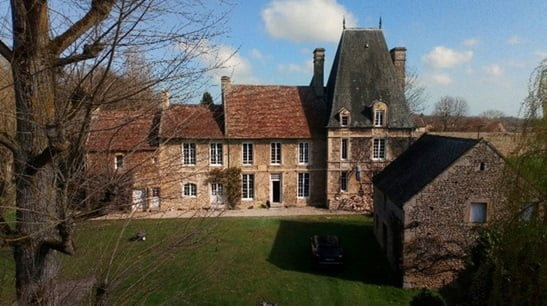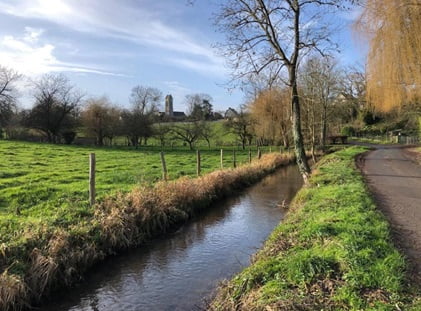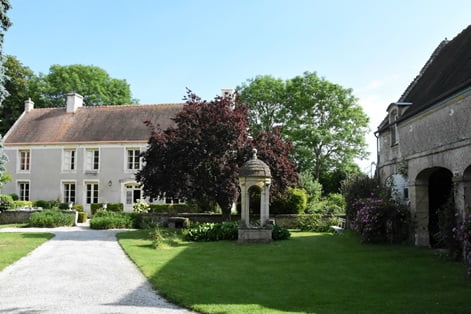The Oppidum and the harbour
Antiquity
Lower Dan valley port facility
Influence of the Orne during Antiquity
The spur of la Grande Roche, which stands before you, has been a site occupied by humans since at least the Neolithic Period. Overlooking the Orne River, it was a highly strategic point to control the valley.
Older excavations (in 1914 and 1925) helped determine that the site was inhabited and protected by ditches and embankments, implying the former existence of an oppidum (fortified village) there.
There are numerous signs of occupancy by the Gauls and Gallo-Romans in Biéville-Beuville: multiple Roman villas were found on the plateau (traces of everyday life, pieces of pottery, vases, ceramic objects, coins…) as well as the remains of a Roman encampment on the way out of town on the road to Mathieu. A Roman road then cut through the town’s territory. Its tracing is known because it matches the hiking trail alongside the farm of Bellevue. This path linked Bayeux to Rouen, passing through Périers, Beuville, and lastly Bénouville.
An even more surprising site was unearthed after several digging campaigns between 2008 and 2012: it is an ensemble of port equipment at the foot of the oppidum. Among other things, a quay, low walls, two piers, and a metaled wedge were discovered.
If nowadays the Dan is a narrow and shallow stream, it was very different during Antiquity. From the end of the 1st century B.C. until the 5th century A.D., the Dan was connected to the Orne River by a large and flared natural confluence. After coiling around the spur of la Grande Roche, it led near the port towards the back of a small cove which then grew larger up to the Orne, following a winding tracing downstream for about 1 km. The Orne River was itself more open in the past, which led naval influences to pervade upstream.





